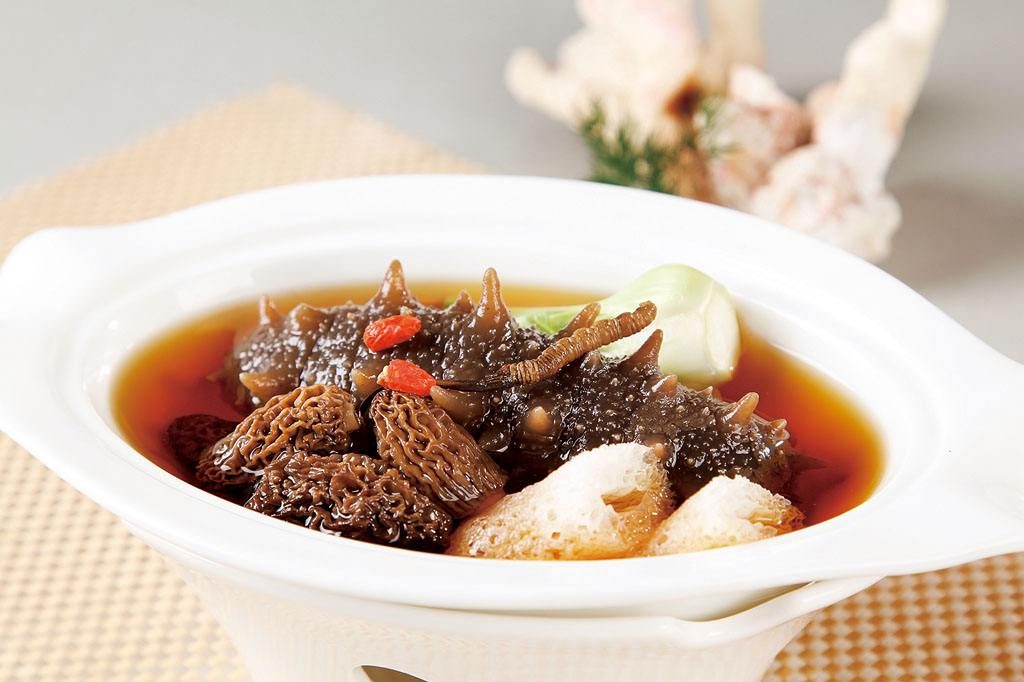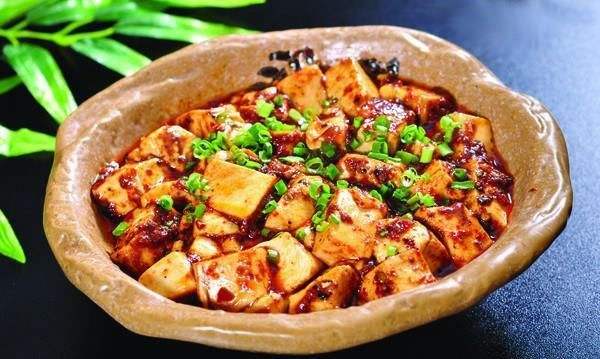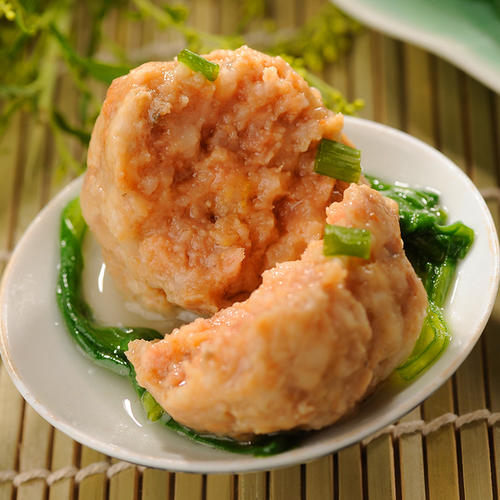From Campfires to the Four Great Cuisines
6 min readA special gallery of the Museum of Natural History in Washington, DC is devoted to an exhibition of Chinese cooking utensils, ranging from chopsticks to Mongolian hot pots. This display is an indication of the high regard in which Chinese cooking is held all over the world. China’s culinary arts underwent a long process of development to achieve today’s degree of refinement.
(1)Cooking:the beginning of civilization
The pictographic characters of written Chinese have origins reach-ing far back into the past.Like fossils,each character offers a glimpse into the evolution of Chinese civilization.The character pao(to roast),for instance,is a graphic representation of an ancient Chinese cooking technique.The component on the left,huo(fire),depicts burning flames,while the original meaning of the right-hand component,bao(package),was to coat game with mud.Taken as a whole,this character signifies encasing meat in mud and roasting it in an open fire.The ancient classic Zhou Li(Rites of the Zhou)relates how the legendary Chinese ancestor Suirenshi first made fire and used it to roast food.
This great discovery marked the beginning of civilization,distinguishing humanity from the animal kingdom and greatly improving health and hygiene.
The character pao(to roast)in seal script
For hundreds of thousands of years,early humans roasted their food in open fires,either directly in the flames or on stone slabs.Approximately 10,000 years ago,in another great milestone of human civilization,the Chinese ancestors invented fired pottery.Among pottery shards found at archeological sites in northern and southern China are fragments of wide-mouthed,round-bottomed vessels,humanity’s earliest known cooking pots.The advent of pottery cooking vessels opened a new chapter in the history of Chinese cuisine.
Fired pottery cooking vessel and stove;Neolithic Age,Yangshao Culture(c.5000-4000 BC).
(2)Boiling and steaming
Boiling followed roasting as humanity’s second method of cooking food.The earliest boiling techniqueconsisted of placing red-hot rocks into containers of water until the water reached a boil.The first such containers included baskets,wooden and stone bowls,skins,and bags.The invention of pottery cooking vessels made it much easier to boil water,since the container could be placed directly on the fire.By around 5000 BC,boiling food in pottery vessels was commonplace throughout China.
The character li(tripod steamer)in oracle bone script The next development in cooking was steaming.Archeological evidence indicates that vessels for steaming food were in use by the time of the Yin Dynasty(c.14th-1lth century BC).The character li(tripod steamer)graphically depicts an ancient type of steamer.
The li had three hollow legs that could be filled with water and an upper chamber in which food was placed,with perforations between the two sections.Fuel was burned underneath the vessel,and as the water in the legs boiled,the steam rose to cook the food in the upper chamber.
The technique of cooking food with steam was not known in the classical Western world,and the firstattempts to use steam to create mechanical energy did not occur in the West until the 16th century.
By the time the steam engine was invented in Europe,ushering in the modern Industrial Age,the Chinese people had been harnessing the power of steam to cook food for thousands of years.
Bronze li(tripod steamer);Western Zhou Dynasty(1046-771BC)
(3) Specialized vessels
Stone tools and pottery vessels were followed by the emergence of specialized cooking and eating vessels made of bronze and later iron. Meriting special attention is the ding (tripod cauldron),a unique ancient Chinese vessel. The tripod configuration of the ding made it especially stable when placed on the ground. In addition to being used to hold food and drink, the ding could also be placed on a fire and used for cooking. Most dings had three legs, although some examples have been found with four. The earliest dings were made of fired pottery, but with the invention of metalworking, bronze and iron became the preferred materials.
By the time of the Shang and Zhou dynasties (17th-11th century BC), bronze and iron dings were highly prized as tableware. Because of their great cost, dings were generally owned only by the richest and most powerful members of society.”The music of bells accompanies food served in dings.”This saying describes the luxurious lifestyle enjoyed by China’s ancient ruling class, as they feasted out of bronze dings to the accompaniment of elegant music and dance. Over time, the ding came to symbolize high rank and social status, and eventually imperial power.
Ding(tripod vessel); Western Zhou Dynasty(1046-771 BC)
Porcelain tableware started to appear during the Han Dynasty (202 BC-220 AD). Chopsticks were invented much earlier, and were in common use throughout China by the beginning of the Spring and Autumn Period(770-476BC).
Yanyin Qiwu(Banquet with Music and Dancing), rubbing of stone engraving; Han Dynasty(202 BC-220 AD).
(4)From the Five Flavors to the Four Great Cuisines The theory and use of seasonings in Chinese cuisine has a history that reaches back thousands of years.
The concept of seasoning food did not exist in prehistoric times.For an extended period of time after the invention of cooking,food remained bland and unadorned.Meat is inherently quite flavorful;however,grains and vegetables may benefit from a bit of spicing up.Consequently,with the advent of agriculture,a wide range of culinary flavorings were developed.The traditional Chinese concept of the Five Flavors refers to sweet,sour,bitter,spicy,and salty.With the exception of sweet,the other four flavors are not particularly pleasing to the palate.However,their judicious application can transform the taste of food,creating a wide variety of wonderful new flavors and greatly stimulating the appetite.

Shandong-style Braised Sea Cucumber with Green Onions According to ancient Chinese writings,a number of condiments were in use by the time of the Shang Dynasty(c.1600-1046 BC).Salt and plums were among the earliest seasonings,prized for their salty and sour flavors.By the Zhou Dynasty(1046-256 BC),culinary seasoning was a fully developed art,characterized by the extensive use of fermented sauces known as jiang.These condiments,made by combining meat,seafood,vegetables,and beans with salt,vinegar,and spices,came in both liquid and paste forms,and were eaten with all types of dishes.They included hunjiang(fermented meat sauce),sujiang(fermented vegetable sauce),yanjiang(pickle sauce),and jiangcai(pickled vegetables).
Zhou Li:Tian Guan(Rites of the Zhou:the Heavenly Oficial)states that when the Zhou emperor conducted sacrifices or held great feasts for important guests,120 different types of jiang were served,a different flavor for each dish.According to ancient records,the Eight Treasures of the Zhou Dynasty referred to eight special dishes that were served with various fermented sauces.Among them were rice with fermented meat sauce,roast suckling pig,stewed mutton,and drunken beef.
Sichuan-style Mapo Tofu(Spicy Bean Curd)

There are over 500 different Chinese condiments, falling into the nine main categories of salty, sweet, sour, spicy, bitter, fresh, savory, numbing, and bland. Technological developments, as well as regional variations in ingredients, climate, lifestyle, and geography, gave rise to wide differences in taste and eating habits across China. For instance, people along China’s southeastern seaboard like to eat fish and shellfish, while people from the inland plateau prefer meat and fowl. Over thousands of years, these regional preferences evolved into a number of distinctive culinary traditions.
Jiangsu-style “Lion Head”Meatballs

Opinions vary as to how many styles of Chinese cooking there actually are. References are made to the Twelve Great Cuisines, the Eight Great Cuisines, and the Four Great Cuisines. However, it is generally recognized that there are four main Chinese cuisines: Shandong style, Sichuan style, Jiangsu style, and Guangdong(Cantonese) style. Each cuisine encompasses thousands of different dishes. In addition to the Four Great Cuisines, there are innumerable regional variations. Even the classic dishes of the Four Great Cuisines are often altered according to local tastes. For instance, popular Sichuan-style dishes such as Gongbao Chicken and Mapo Tofu (Spicy Bean Curd), extremely spicy in their original versions, are generally toned down considerably when served in Chinese restaurants in the West.








